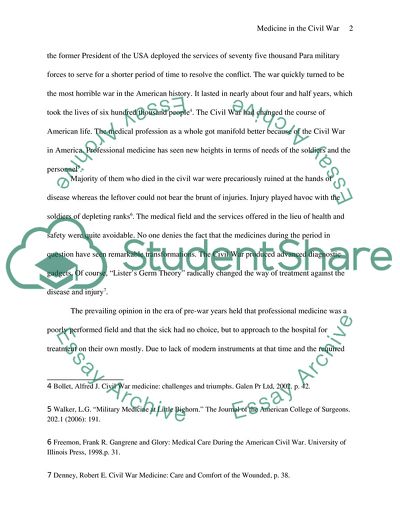Cite this document
(The Practice of Medicine was Transformed during the Civil War Report Example | Topics and Well Written Essays - 3250 words, n.d.)
The Practice of Medicine was Transformed during the Civil War Report Example | Topics and Well Written Essays - 3250 words. https://studentshare.org/history/1821402-the-practice-of-medicine-was-transformed-during-the-civil-war
The Practice of Medicine was Transformed during the Civil War Report Example | Topics and Well Written Essays - 3250 words. https://studentshare.org/history/1821402-the-practice-of-medicine-was-transformed-during-the-civil-war
(The Practice of Medicine Was Transformed During the Civil War Report Example | Topics and Well Written Essays - 3250 Words)
The Practice of Medicine Was Transformed During the Civil War Report Example | Topics and Well Written Essays - 3250 Words. https://studentshare.org/history/1821402-the-practice-of-medicine-was-transformed-during-the-civil-war.
The Practice of Medicine Was Transformed During the Civil War Report Example | Topics and Well Written Essays - 3250 Words. https://studentshare.org/history/1821402-the-practice-of-medicine-was-transformed-during-the-civil-war.
“The Practice of Medicine Was Transformed During the Civil War Report Example | Topics and Well Written Essays - 3250 Words”. https://studentshare.org/history/1821402-the-practice-of-medicine-was-transformed-during-the-civil-war.


